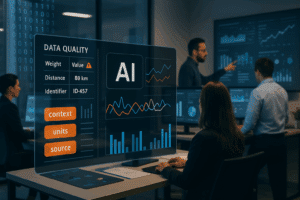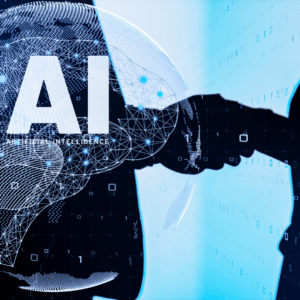Let’s start by addressing the obvious issue: the term Artificial Intelligence, or “AI,” has become so overused that it’s lost its clear, actionable meaning. What we truly need is consistency and a solid foundation in our advanced computing systems. Yet, we’re constantly pushing these systems to do more without a solid foundation. Every so-called “AI/ML” breakthrough eventually encounters significant challenges—unpredictable behavior, or worse, catastrophic outcomes. Our typical response? Adding more layers of complexity to an already convoluted system. This approach is unsustainable.
In my experience working in the rapidly evolving field of advanced computing and AI, I’ve observed a critical disconnect between the foundational science and engineering that’s hindering sustainable progress. This gap, rooted in a divergence between theoretical research foundations and practical application, needs immediate attention. Addressing the science and engineering disconnect in advanced computing is essential for achieving reliable and future-proof advancements of applied information systems.
From my perspective, addressing the science and engineering disconnect in advanced computing and AI requires returning to first principles for foundational clarity, fostering multidisciplinary collaboration for innovative solutions, applying disciplined execution to bridge theory and practice effectively, enhancing communication and alignment between scientists and engineers, and promoting continuous learning and adaptation to keep pace with technological advancements and emerging challenges.
- Understanding the Roots of the Science and Engineering Disconnect
- Returning to First Principles: The Foundation for Sustainable Progress
- The Power of Multidisciplinary Collaboration: Bridging the Divide
- Disciplined Execution: Turning Theoretical Insights into Practical Solutions
- Enhancing Communication and Alignment: The Human Element
- Continuous Learning and Adaptation: Staying Ahead in Advanced Computing
- The Path Forward in Addressing the Science and Engineering Disconnect
Key Takeaways
- Acknowledge the historical and structural factors that have led to the divergence between scientific research and engineering application, which is crucial for developing effective solutions.
- Revisit foundational concepts to create a shared understanding between scientists and engineers, fostering innovation and practical solutions.
- Leverage the strengths of multidisciplinary teams to bridge the gap between theory and practice, accelerating the pace of innovation.
- Apply a rigorous, structured approach to ensure that theoretical insights are effectively translated into practical solutions.
- Improve communication between scientists and engineers to align goals, reduce misunderstandings, and ensure collaborative success.
- Foster a culture of continuous learning to stay ahead of technological advancements and emerging challenges in advanced computing.
While these steps outline a clear path forward, I recognize that the journey toward overcoming this disconnect is complex. In the following sections, I’ll delve deeper into each solution, offering insights and practical guidance to help you navigate these challenges effectively.
Understanding the Roots of the Science and Engineering Disconnect
The science and engineering disconnect in advanced computing has deep historical and structural roots. In my observations, scientists often focus on theoretical exploration, pushing the boundaries of what’s possible, while engineers work to apply these theories to practical solutions. This divergence—curiosity-driven research versus application-driven outcomes—has only widened the gap. For instance, while scientists may develop new algorithms, engineers frequently struggle to implement them in real-world systems due to differences in scale, speed, or practicality.
I’ve seen many advanced computing projects face challenges when moving from concept to implementation because of a lack of alignment between scientific theories and engineering practices. Understanding the origins of this gap is crucial for bridging it and ensuring that innovations are not only groundbreaking but also actionable.
Returning to First Principles: The Foundation for Sustainable Progress
One of the most effective ways I’ve found to bridge the science and engineering disconnect is by returning to first principles. This approach involves both scientists and engineers revisiting the foundational concepts that underpin their work. By stripping away complexity and focusing on core principles, teams can create a shared understanding that fosters collaboration and innovation.
First principles thinking has been instrumental in many fields, including computing. Take SpaceX, for example; they used first principles to revolutionize rocket engineering, achieving unprecedented cost efficiencies by rethinking the basic components of rocket design. In advanced computing, I believe a similar approach could help realign scientific discovery with engineering applications. By focusing on what is fundamentally true, rather than what is traditionally assumed, teams can develop solutions that are both innovative and practical.
The Power of Multidisciplinary Collaboration: Bridging the Divide
Collaboration across disciplines is another critical factor I’ve identified in overcoming the science and engineering disconnect. Multidisciplinary teams bring diverse perspectives, leading to more holistic and effective solutions. When scientists and engineers work together from the outset, they can address challenges early, ensuring theoretical innovations are designed with practical applications in mind.
A study from the National Institutes of Health (NIH) showed that multidisciplinary collaboration in healthcare improved outcomes by 30%, illustrating how diverse expertise can solve complex problems. This success in healthcare highlights the potential of cross-disciplinary teams in advanced computing, where similar collaboration can bridge the gap between theory and practice, accelerating innovation and creating robust, actionable solutions.
Disciplined Execution: Turning Theoretical Insights into Practical Solutions
Even with a shared understanding and collaboration, I’ve seen that successful implementation requires disciplined execution. In advanced computing, the journey from theoretical insight to practical solutions is fraught with challenges. Without a rigorous, disciplined approach, even the most promising innovations can falter.
Disciplined execution, in my experience, involves adhering to structured processes, setting clear milestones, and rigorously confronting each stage of development with data and testing the inputs, outputs, and algorithms with the axioms of the underlying science. This is especially true for machine learning applications as they are grounded in statistics and probabilistic reasoning techniques. This ensures that theoretical concepts are validated and refined before they reach full-scale implementation.
Enhancing Communication and Alignment: The Human Element
Communication is often the weakest link in bridging the science and engineering disconnect. Misalignment typically arises not from technical challenges but from a lack of clear communication between teams in large transdisciplinary projects. I’ve found that ensuring scientists and engineers are aligned in their goals, expectations, and terminology is critical to success.
Well-planned meetings, shared documentation, and joint problem-solving sessions are practical ways to enhance communication. By creating a culture of open dialogue and mutual respect, we can reduce misunderstandings and ensure that all team members are working toward a common objective.
Continuous Learning and Adaptation: Staying Ahead in Advanced Computing
The rapid pace of change in advanced computing demands continuous learning and adaptation. Technologies and methodologies evolve quickly, and what worked yesterday may be obsolete tomorrow. This reality makes it essential for both scientists and engineers to remain agile and continuously update their knowledge and skills.
A culture of continuous learning is crucial for staying ahead of industry trends and emerging challenges. For instance, Google’s focus on continuous learning has helped maintain its position at the forefront of artificial intelligence advancements. However, recent issues with Generative AI highlight the risks of neglecting broader scientific foundations. Areas like information theory, statistical first principles, and logic are still highly relevant today, yet they were seemingly overlooked in favor of rapid advancement.
Google’s challenges are not unique—they reflect a broader trend in the tech industry where the drive for innovation sometimes leads to a disregard for foundational sciences. I believe it’s time for technology companies to encourage their engineers and research scientists to delve deeper into the underlying science that enabled the first AI applications. They may find that they’re building on a “Base of Sand,” — a problem that was already recognized by the military in its advanced computing systems back in the 1990s.
The Path Forward in Addressing the Science and Engineering Disconnect
The science and engineering disconnect in advanced computing and AI represents a significant challenge, but it is not insurmountable. By adopting a comprehensive approach that includes revisiting first principles, fostering collaboration, ensuring disciplined execution, enhancing communication, and committing to continuous learning, we can overcome this disconnect and drive sustainable advancements in the field. As we bridge the gap between theory and practice, we unlock the full potential of innovation, leading to solutions that are both groundbreaking and practical. Now is the time to act decisively and ensure that our efforts in advanced computing are not just visionary but also viable.
To truly energize your data and bridge the gap between science and engineering in advanced computing, consider how KaDSci can help you achieve sustainable progress. Contact us today to learn how our solutions can drive innovation and long-term success in your organization
How does the science and engineering disconnect impact the adoption of emerging technologies?
The science and engineering disconnect is a two-edged sword. In some cases, science is providing opportunities that are not being leveraged significantly slow the adoption of emerging technologies by creating a gap between what is theoretically possible and what is practically achievable. When scientific advancements outpace engineering capabilities, it leads to delays in bringing new technologies to market. On the flip side, technology, especially information technology, that disconnects itself from the scientific first principles that were their foundation are fraught with risk of unintended consequences, some of them potentially catastrophic.
How can organizations ensure that their engineering teams stay aligned with scientific advancements?
Organizations can keep their engineering teams aligned with scientific advancements by fostering a culture of continuous learning and collaboration. Regular cross-disciplinary meetings, workshops, and joint projects between scientific researchers and engineers can help bridge the gap. Implementing knowledge-sharing platforms and integrating research and development (R&D) efforts with engineering processes also ensures that scientific discoveries are communicated effectively and translated into actionable insights. Additionally, adopting a first-principles approach allows both scientists and engineers to work from the same foundational understanding, enhancing alignment and ensuring that new technologies are developed with practical applications in mind.
What role does data management play in bridging the science and engineering disconnect?
Data management plays a crucial role in bridging the science and engineering disconnect by providing a structured way to collect, analyze, and utilize data across both scientific and engineering domains. Effective data management ensures that relevant data is accessible, accurate, and aligned with the goals of both scientific research and engineering development. By integrating data management systems with advanced analytics, organizations can derive actionable insights that inform both scientific exploration and engineering implementation. This alignment facilitates better decision-making, reduces the risk of errors, and accelerates the development of innovative solutions that are both scientifically sound and practically feasible.










